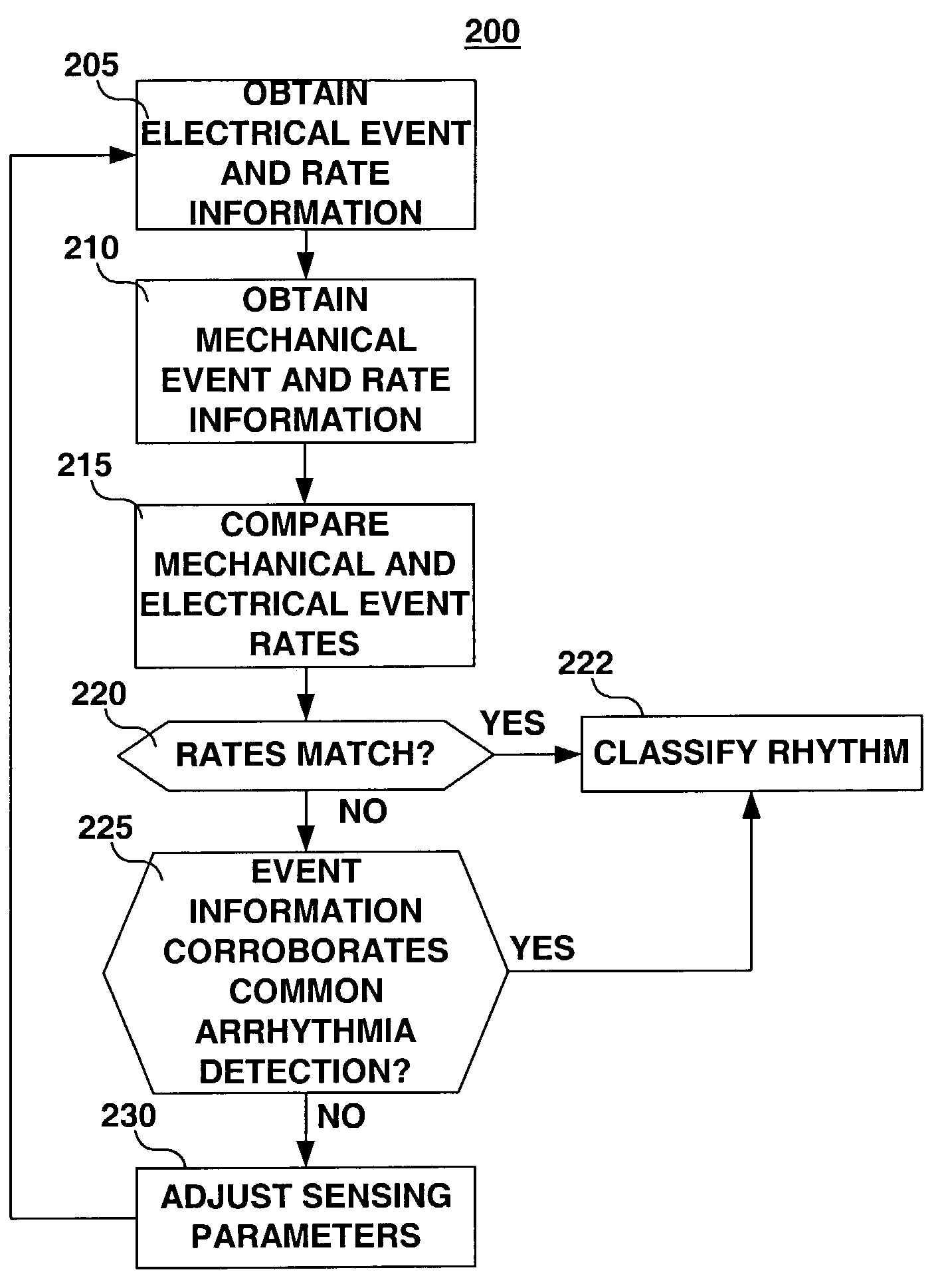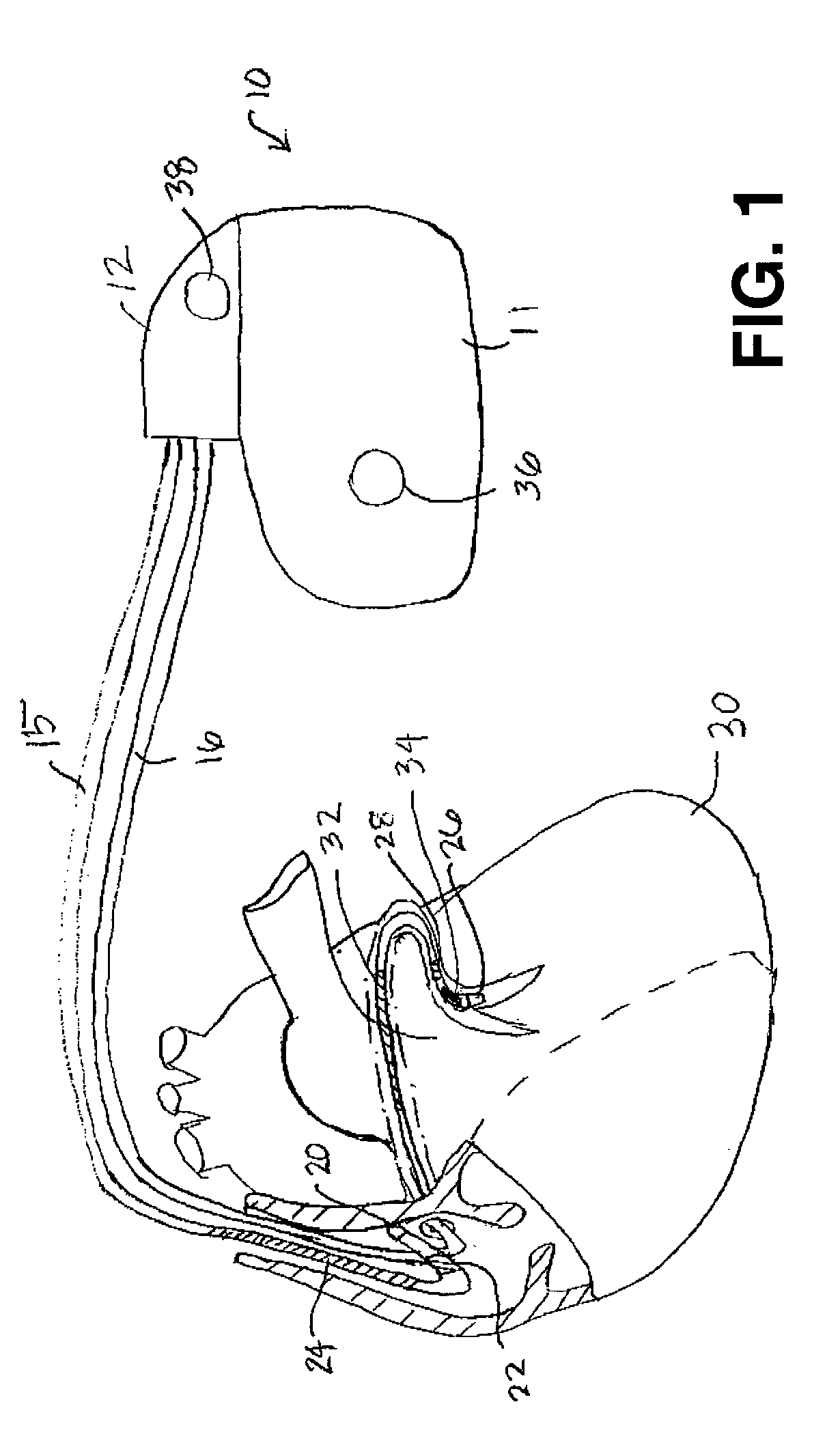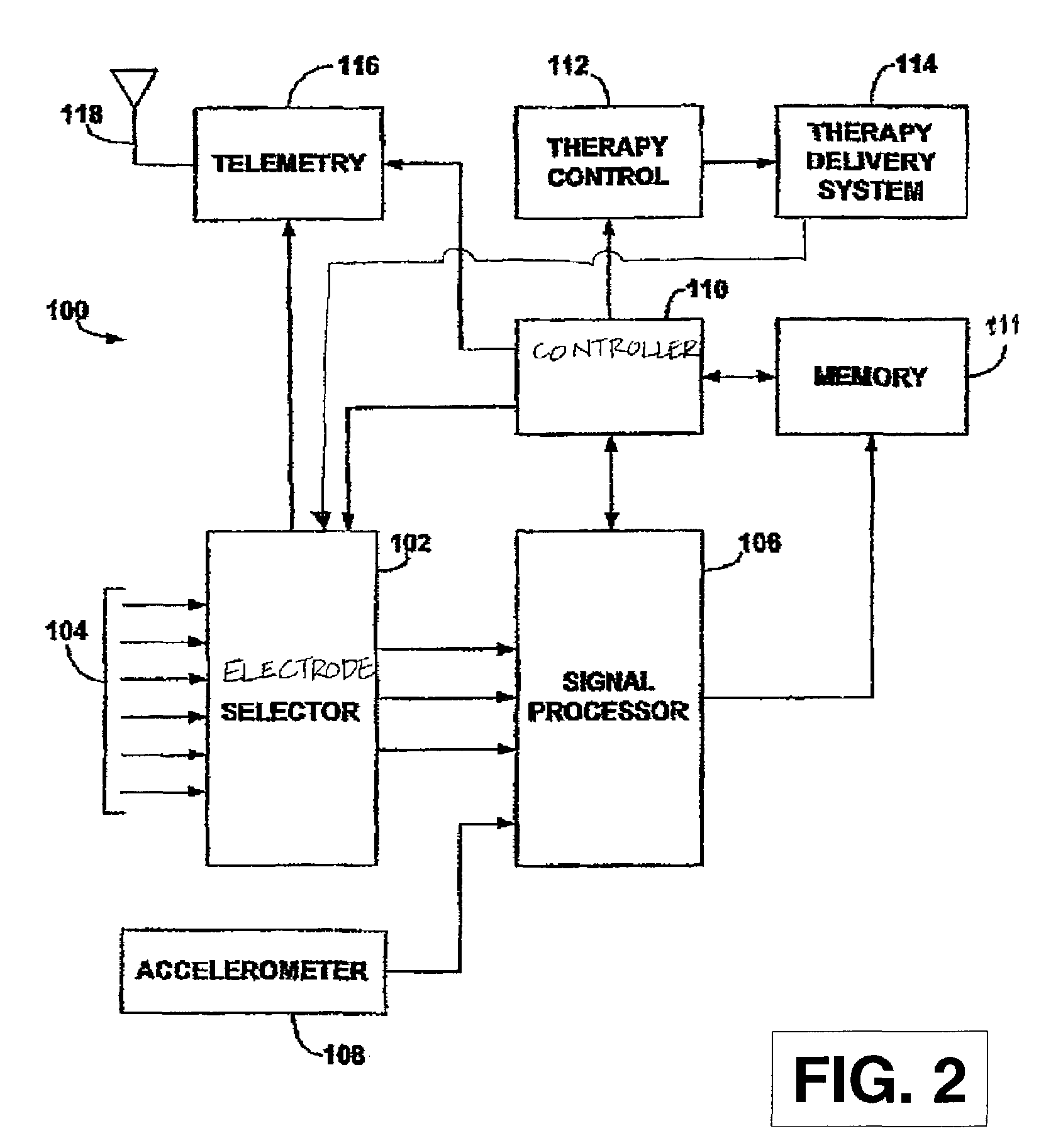Use of accelerometer signal to augment ventricular arrhythmia detection
- Summary
- Abstract
- Description
- Claims
- Application Information
AI Technical Summary
Benefits of technology
Problems solved by technology
Method used
Image
Examples
Embodiment Construction
[0032]As indicated above, the present invention is directed toward providing a method and apparatus for detecting and classifying cardiac arrhythmias. The present invention is useful in patient monitoring and in selecting an appropriate cardiac stimulation therapy, or other type of therapy such as a drug therapy, to treat a detected arrhythmia. As such, the present invention may be embodied in an implantable cardiac monitoring system or in an implantable cardiac stimulation or other therapy delivery system.
[0033]FIG. 1 is an illustration of an implantable medical device 10 in association with a patient's heart 30. IMD 10 may be configured for both monitoring of and delivering therapy to heart 30. For example, IMD 10 may include a pulse generator to deliver electrical stimulation to heart 30 for use in cardiac pacing therapies, cardioversion or defibrillation. In accordance with the invention, IMD 10 obtains a signal indicative of the dynamic mechanical activity of heart 30 and an el...
PUM
 Login to View More
Login to View More Abstract
Description
Claims
Application Information
 Login to View More
Login to View More - R&D
- Intellectual Property
- Life Sciences
- Materials
- Tech Scout
- Unparalleled Data Quality
- Higher Quality Content
- 60% Fewer Hallucinations
Browse by: Latest US Patents, China's latest patents, Technical Efficacy Thesaurus, Application Domain, Technology Topic, Popular Technical Reports.
© 2025 PatSnap. All rights reserved.Legal|Privacy policy|Modern Slavery Act Transparency Statement|Sitemap|About US| Contact US: help@patsnap.com



